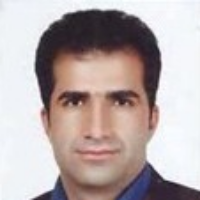presentation of Ingrowth models and determination of biotic and abiotic factors affecting regeneration in the Hyrcanian forests
Abstract:
Background And Objectives
Hyrcanian is a productive region near the southern coast of Caspian Sea. Her forests are mostly uneven-aged beach-dominated hardwood mixtures. There is increasing willingness to treat these forests without clear-felling, following the ideas of continuous cover management. This paper examines the possible ecological controls on ingrowth in a high-elevation forest in northern Iran. Natural regeneration is one of the most important affecting factors in survival and stability of natural forests. Understanding the factors that affecting the forest species regeneration can be helpful to understand the ecosystem succession stages. Recently, due to complexity of factors that affecting natural regeneration, using the growing models in order to determine affecting factors is very common.Materials And Methods
The Kheyrud forest covers 80 km2 near the port city of Nowshahr. The elevation of the Kheyrud forest varies from 10 m to 2200 m above sea level Ingrowth model was used to estimate the diameter increment in oriental beech at fixed sample plots level over a period of 9 years (2003-2012) In this study the impact of biotic and abiotic variables like competition, energy of sunlight in the growing season, topographic wetness index, highest point to nearest of drainage area, wind speed from ground-complex process models and other variables which are considered to be achieved for the first time on natural regeneration were investigated using fixed plots in Hyrcanian forests.Results
Results showed that the mean number of regeneration in the unit area (hectares) are very low and equal to approximately 15 trees per hectare (up to a diameter of 7 cm) in a period of 9 years. The simplest way to predict and simulate ingrowth is to use the mean values for all stands. However, this is not biologically justified since ingrowth should eventually start decreasing with increasing stand basal area. The beech trees are of the most number of regeneration per hectare which represents the suitability of environmental and biological conditions for these valuable trees in the Hyrcanian forests. Basel area per hectare was the main affecting factor on regeneration in study area which defines about 40 percent of regeneration.Conclusion
Humidity and temperature and the amount of solar radiation were the most important variables in the number of regeneration in Hyrcanian Forests. Consequently methods that used in this study are new and also can be used in other forested area in Iran. Finally, this research is trying to explain changes of ingrowth and abiotic and biotic variables in the fixed sample plots. Keywords:
Language:
Persian
Published:
Wood & Forest Science and Technology, Volume:24 Issue: 2, 2017
Page:
1
magiran.com/p1733322
دانلود و مطالعه متن این مقاله با یکی از روشهای زیر امکان پذیر است:
اشتراک شخصی
با عضویت و پرداخت آنلاین حق اشتراک یکساله به مبلغ 1,390,000ريال میتوانید 70 عنوان مطلب دانلود کنید!
اشتراک سازمانی
به کتابخانه دانشگاه یا محل کار خود پیشنهاد کنید تا اشتراک سازمانی این پایگاه را برای دسترسی نامحدود همه کاربران به متن مطالب تهیه نمایند!
توجه!
- حق عضویت دریافتی صرف حمایت از نشریات عضو و نگهداری، تکمیل و توسعه مگیران میشود.
- پرداخت حق اشتراک و دانلود مقالات اجازه بازنشر آن در سایر رسانههای چاپی و دیجیتال را به کاربر نمیدهد.
In order to view content subscription is required
Personal subscription
Subscribe magiran.com for 70 € euros via PayPal and download 70 articles during a year.
Organization subscription
Please contact us to subscribe your university or library for unlimited access!


